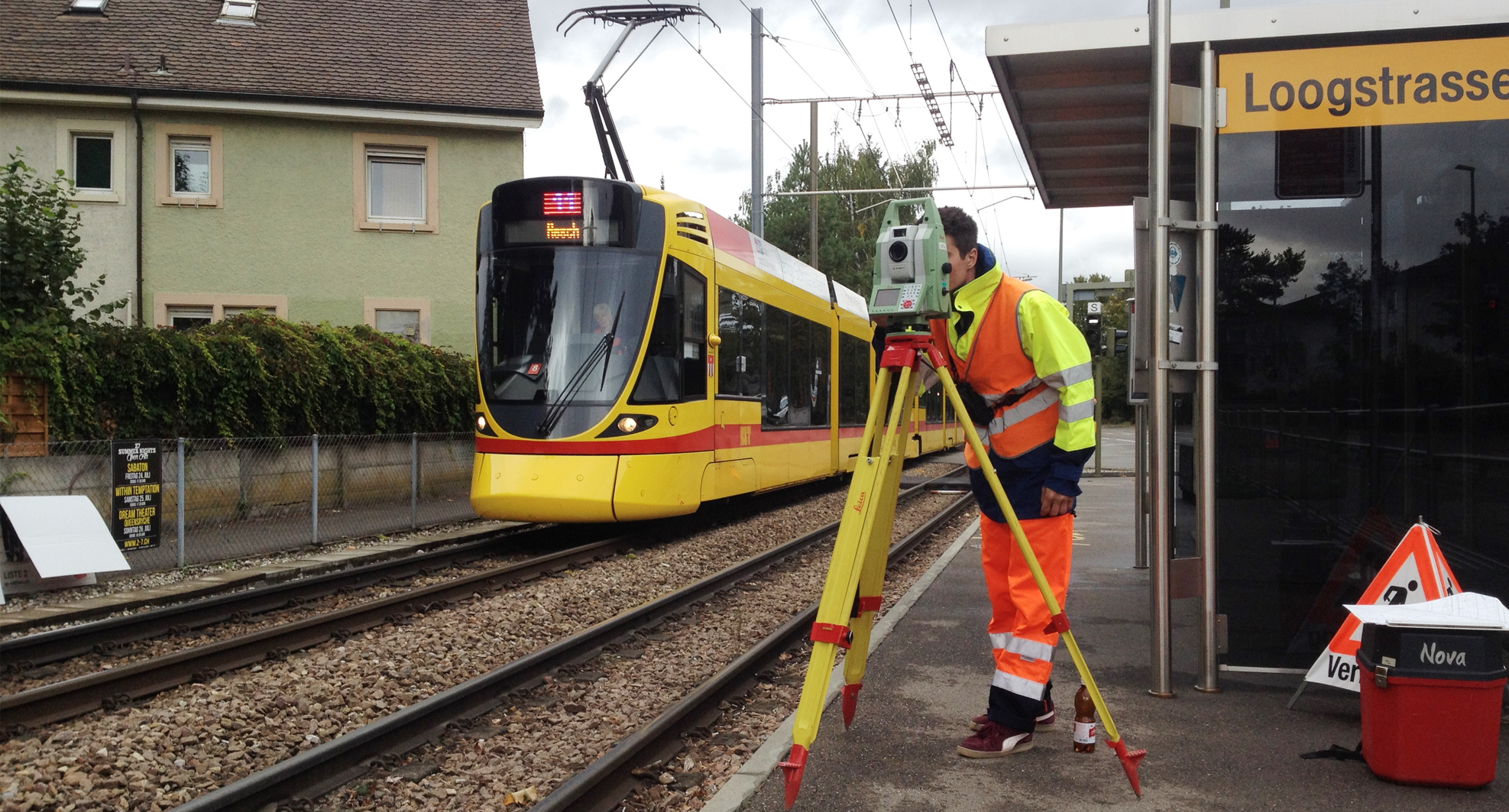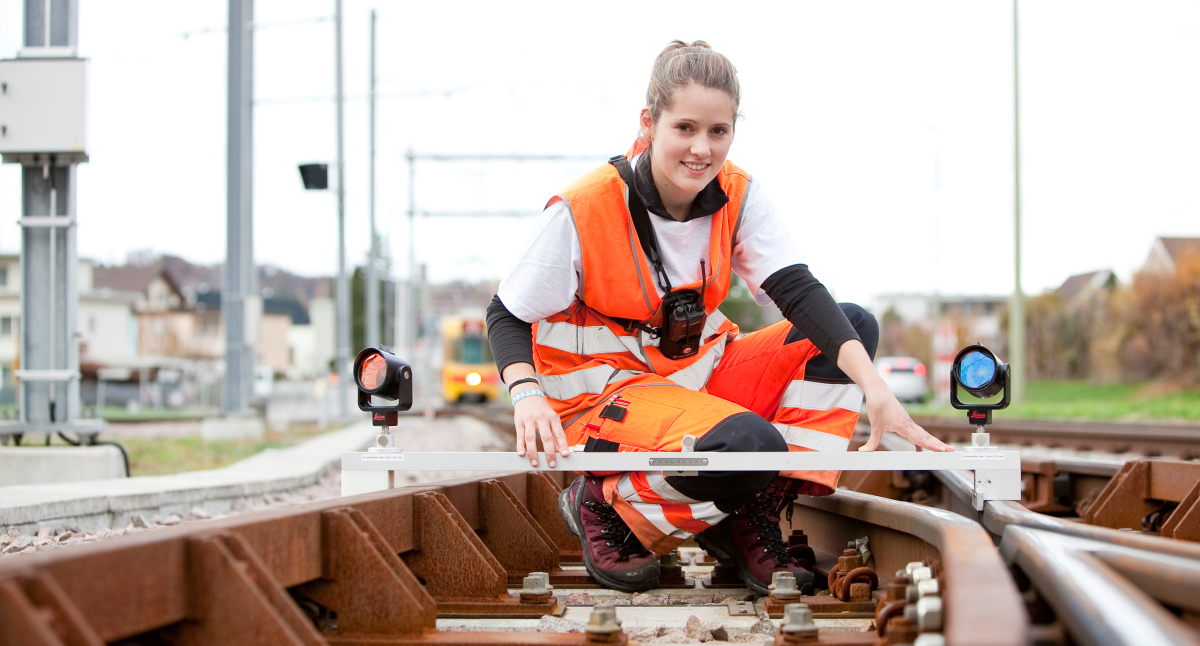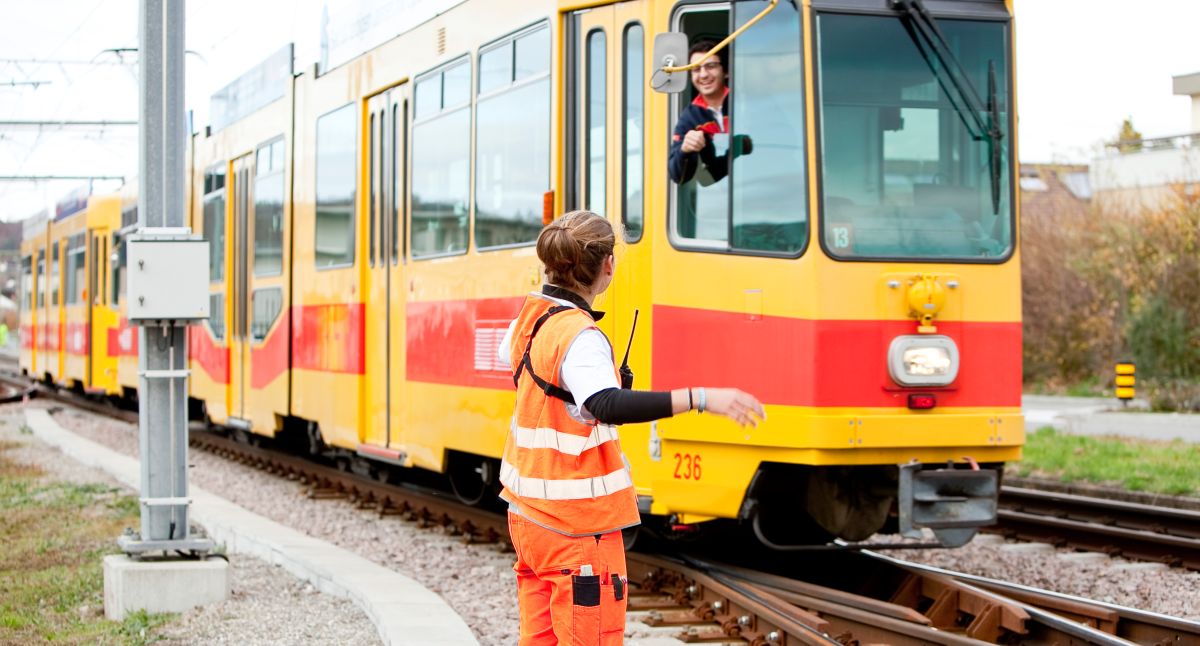Digital into the Future
The engineering office Jermann Ingenieure + Geometer AG was given the job to survey around 14 kilometres of track for the railway company Baselland Transport AG (BLT). Here follows a discussion with the project leader Michael Schrattner and head of the surveying team Pascale Spychiger about the challenges in railway surveying, working at night and friendly tram drivers.




The digital age has found its way to Baselland Transport AG: How urgent was the need for a digitalised inventory?
Schrattner: Starting in 2017 BLT has many remodelling projects in the pipeline for which we needed to provide an up-to-date and reliable data basis. BLT'S data up to this point had always been in an analogue format or saved as a CAD file. Digitalising its inventory was becoming a matter of urgency for BLT.
What did the BLT job involve?
Schrattner: A total of 14 kilometres of the existing track network had to be surveyed. This included all the infrastructure objects as well as logging the tracks, cable and drainage conduits, the railway signals, train safety measures, train stations, catenary poles, fences, walls, booms, railway crossings and many further such details. We logged, and back at the office later evaluated, a total of around 17,000 surveying points and objects.
You were awarded the contract at the beginning of June 2015 and aimed to deliver the first evaluations to BLT by the end of September. How do you go about such a project?
Schrattner: The time available was extremely tight considering the track length and the number of objects to be logged. A precise analysis of the task was an absolute must. So was the need for precise scheduling, for which BLT and my team worked together to draw up a rigorous timetable. The same person always ran the surveying team so that we could guarantee a speedy and steady quality of data logging on site. Though the extensive object catalogue proved quite difficult, good teamwork between client and contractor meant it could be successfully put into practice.
Spychiger: Such an extensive and tightly scheduled logging task certainly did pose quite a challenge. Indeed the difficult conditions under which the team was forced to work, such as 40-degree heat in the shade in summer or icy temperatures during the night in winter, are certainly worth a mention. Managing the data in both the field and when evaluating it in the office was definitely not easy to master. In the end it was the meticulous preparation which made it possible.
Surveying the track network, catenary poles, signalling and the many other objects required extensive expertise.
Schrattner: Right! And despite many years of experience in railway surveying, each new project has its own particular peculiarities and requirements. You have to familiarise yourself with every project and analyse it most carefully. Good preparation is vital. It helps you approach things with clear goals, because experience teaches that in such projects not everything can be planned down to the tiniest detail in advance. Logging Reinach's town centre, for example, was to be carried out during the day, but due to circumstances on site the work suddenly had to be put off till after dark. Besides planning the actual surveying on site, evaluating the surveying data back in the office was also demanding. Choosing suitable software was therefore paramount. With card_1 the existing track parameters could be efficiently and reliably determined, following which the kilometrage of the logged railway objects could be calculated. These were then managed, with their correct geometry and all other necessary object parameters, using the geo-database ArcGIS and subsequently made available to our client.
How do you keep an eye on all the details and make sure that everything is surveyed and gets into the inventory when logging the existing conditions?
Spychiger: Working carefully and constant checking is vital if you want to guarantee complete and exact data logging. We were extremely precise when documenting all our on-site measurements. The existing plans and BLT's own railway line videos provided a useful comparison and benchmark for our evaluations back at the office.
Was service ever disrupted?
Spychiger: No – absolutely not. We wouldn't have been doing our job properly if it had. Ensuring continuity of service was top priority, no matter what the task. These were completed without trouble as our team was always careful while surveying and thanks to our reliable safety officers, the team's safety was guaranteed at all times.
What was the most formative experience on this project?
Schrattner: There was a vague sense of uncertainty at the beginning of the project, no doubt due to the large scale of the object catalogue and the tight schedule. Happily, the initial scepticism subsided with each passing day's progress and we became optimistic that we could deliver timely and high-quality data.
Spychiger: Two things in particular made a big impression on me. On the one hand we had an excellent work atmosphere within the team and a constructive working relationship with our client. On the other, our many contacts, especially the friendly tram drivers, who were always ready to hand us a cool drink on hot summer days.
Contractor:
Jermann Ingenieure + Geometer AG
Altenmatteweg 1
CH-4144 Arlesheim
Fon +41 61 70693-93
Fax +41 61 70693-94
E-Mail to Jermann
www.jermann-ag.ch